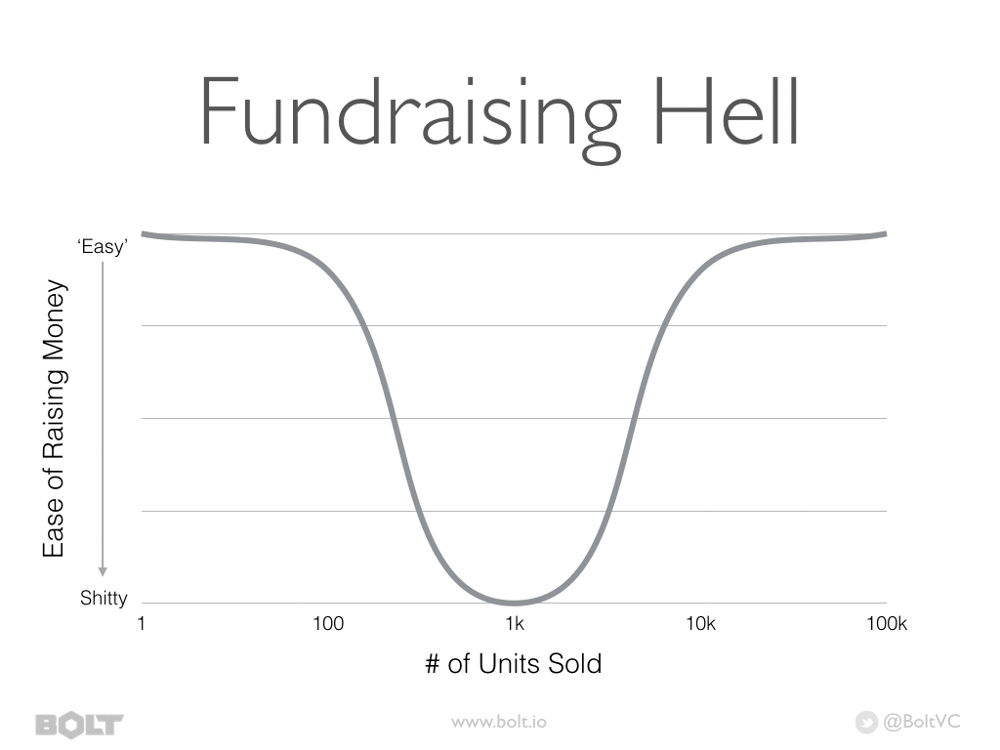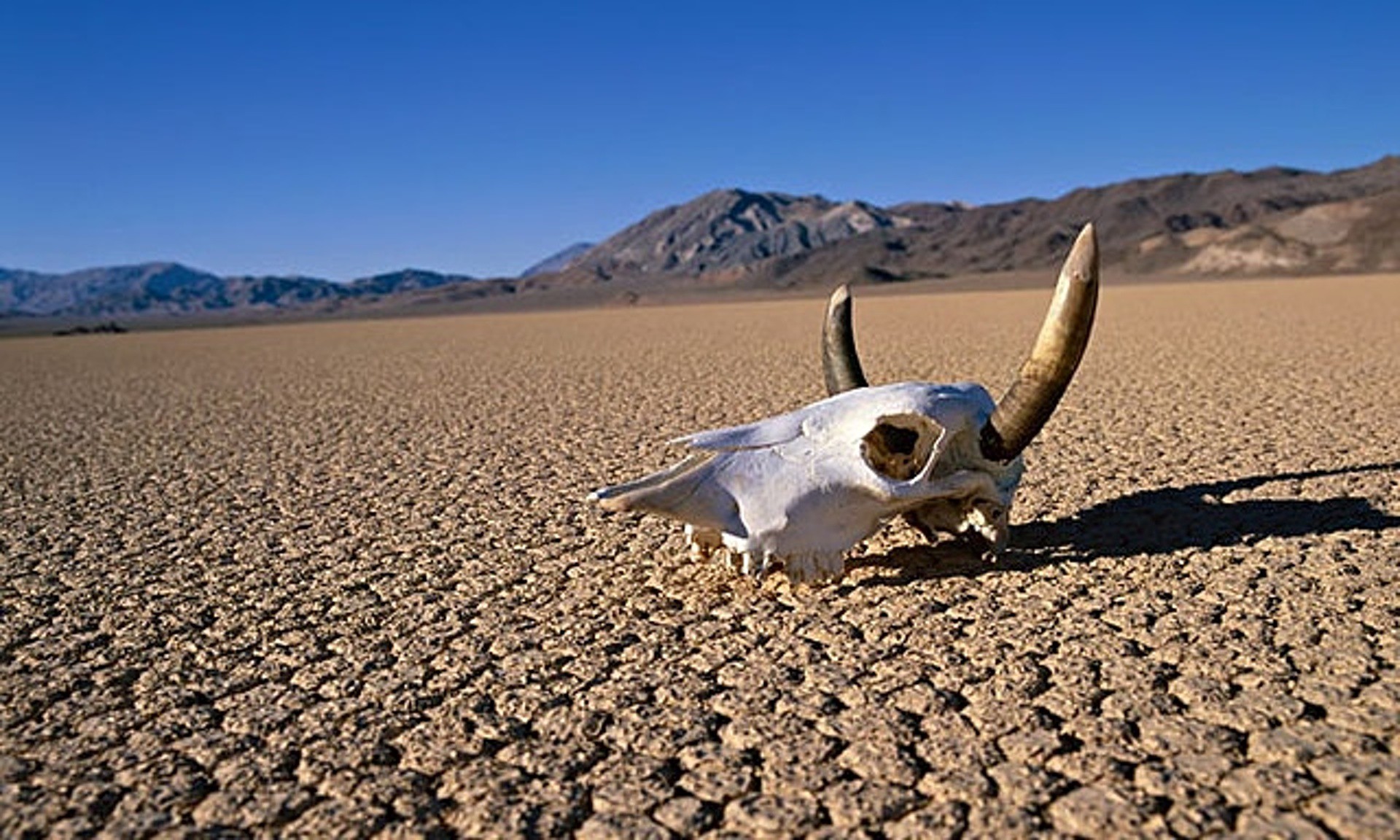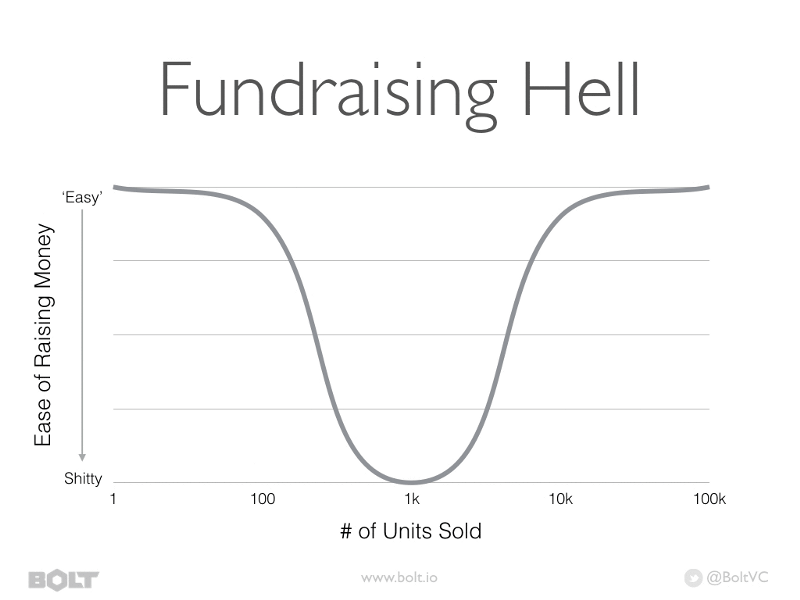
There’s a valley of death for hardware startups. Ironically, it occurs when companies start selling their products.

There’s a valley of death for hardware startups. Ironically, it occurs when companies start selling their product.
Pre-revenue startups raise money on stories of limitless potential, of rocketship growth and products flying off the shelves. Post-revenue startups don’t have that luxury. They need to tell stories of revenue growth, high margins, and traction. They need data to back up their claims. This transition stinks because it occurs at the same time that many companies are finishing their first or second production runs. You’re in the middle of both fundraising and manufacturing hell.

Manufacturing Hell
- Economies of scale haven’t kicked in yet. First production runs are often in the 5–10k unit range so components are still being sourced in small quantities. Fixed costs like injection mold tooling, factory NRE (non-recurring engineering), or retail program fees are amortized over a small number of units.
- Production is still being financed by equity. Because unit volumes are low, it’s unlikely you’ve unlocked better factory financing. You’re not making much from each sale and likely haven’t signed major POs (purchase orders) so production is being paid for by money raised from equity investors.
Fundraising Hell
- Unexciting metrics. Since you’ve only sold a few thousand units your top line revenue numbers and margins aren’t great yet. You’re still fixing quality issues from the first production run so there’s likely not yet a good story to tell about Amazon reviews or NPS (Net promoter score).
- Still figuring out customer acquisition. It’s hard to get Series A investors excited without demonstrated traction. Founders are often so focused on getting first units out the door, that almost all of their seed round has gone towards engineering hires and not towards marketing or distribution hires focused on customer acquisition and scale.
How do you get through this?
There’s no easy answer, but here are some things you can do to be prepared:
- Have a margin structure that supports growth. Product designers talk about the minimum 2.5 BOM to MSRP ratio. That is, if my bill of materials is $10 dollars, I need to sell each unit for at least ~$25 to have a chance at a sustainable business. Ideally, each unit you sell should fund the production of two additional units. This enables exponential growth and is essential to having enough free cash flow to scale.
- Know what unit volumes unlock better production financing. It’s common to pay 50% upfront and 50% on delivery with a contract manufacturer (CM) you’ve never worked with. As volumes grow, many CMs will be more flexible and open to terms like Net 30. Have this conversation with your CM early on so you don’t have to spend 6 months beating on investors’ doors each time you want to produce another 10,000 units.
- Hire a great sales/channel distribution person as part of your first institutional raise. This is more important than having a full stack engineering team. Just like product development, unlocking a winning marketing and channel distribution strategy is iterative.
- Raise a seed round large enough to fulfill your first major PO. When raising a Series A, having nationwide distribution with a top tier retailer (BestBuy, Target, etc) and sales metrics to back it up is good story to tell.
- Make sure your seed round includes an institutional investor who wrote a large enough check to lead a bridge round. We often see “party rounds”comprised of a bunch of random angels or small funds with no single investor leading the round. When shit hits the fan you need an investor with enough skin in the game (and a large enough fund) to help you through the hard times.
Some companies can raise follow-on rounds of funding solely on the FOMO their fundraising story creates. For most hardware founders however, traction is currency and most don’t survive the transition from what could be to what is. Are you prepared?
Bolt invests at the intersection of the digital and physical world.